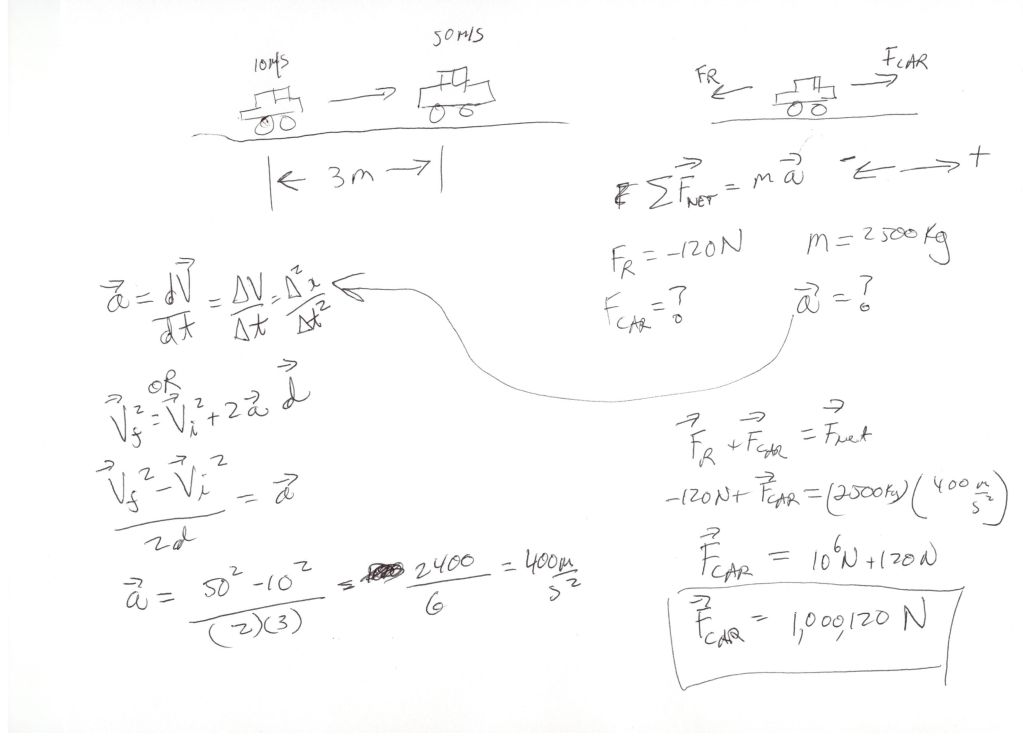"A race car accelerates from 10 m/s to 50
m/s in a distance of 3 m. The mass of the
car is 2500 kg. If there is a force of
resistance of 120 N acting against the car,
find the average value for the force
propelling the car. "
Can we all agree that this professor probably bikes to the university and has no idea about how much a typical car (or race car) weighs? This is pretty sad state for a physics professor who is not in habit of noticing something odd about the numbers. By the way, this is one of the top ranked University in Boston :-( With these type of professors, how do we expect students to excel in real life?
m/s in a distance of 3 m. The mass of the
car is 2500 kg. If there is a force of
resistance of 120 N acting against the car,
find the average value for the force
propelling the car. "
Can we all agree that this professor probably bikes to the university and has no idea about how much a typical car (or race car) weighs? This is pretty sad state for a physics professor who is not in habit of noticing something odd about the numbers. By the way, this is one of the top ranked University in Boston :-( With these type of professors, how do we expect students to excel in real life?


